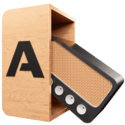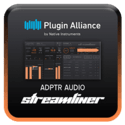Acon Digital DeVerberate 2.1.2
DeVerberate is a reverb reduction plug-in that can attenuate or boost the reverberation that is already present in recorded material. The novel real-time algorithm works equally well with mono as with stereo recordings and splits the incoming audio into an estimation of the direct sound and the reverberated sound which can then be recombined freely. The improvement process can be monitored visually using the spectral representations of the input and output signal as well as of the estimated reverberation.
DeVerberate 2 introduces a new and unique Early Reflections Filter that works in conjunction with the late reverb suppression found in version 1. The Early Reflections Filter uses sophisticated statistical methods to estimate the so called impulse response of the early reflections. The impulse response is then utilized to calculate an inverse filter that cancels out the effect of the early reflections.
Use Cases
- Improve dialog and location sound
- Forensic specialists can improve speech intelligibility
- Attenuate reverberation in existing recordings
- Boost the natural reverberation in existing recordings
- Change the perceived distance in a mix by changing the balance between the direct sound and the reverberation
Acon Digital DeVerberate 2 is available as VST, VST3 or AAX for both Windows and Mac or as AU plug-ins for Mac. There are 32 and 64 bit versions for Windows. The Mac version is 64 bit and runs natively on both ARM (such as Apple M1) and Intel processors.
Platforms and Plugin Formats
- Available as VST, VST3 or AAX plug-in on PC (Vensters)
- Available as VST, VST3, AAX or AU plug-in on Apple Macintosh (OSX)
- Native 32 bietjie en 64 bit versions are available
- Supports sampling rates up to 96 kHz
Acon Digital DeVerberate
- Separate adjustments of the direct sound and the reverberation levels
- Manual adjustment of the decay time of the original reverberation
- Early reflections filter
- Frequency spectrum representation of the of the following signals:
- Input signal
- Output signal
- Estimated reverberation
- Frequency emphasis filter for the the reduction level
- High and low shelving filters with variable slopes (-3 na -96 dB / octave)
- High and low peak filters with adjustable bandwidth (0.1 na 3.0 octaves)
- Graphical representation of frequency response
- Editing of filter settings through handles in the frequency response curve
- EUCON and full Pro Tools HW controller support





